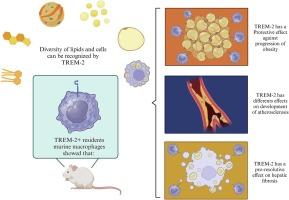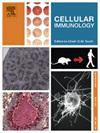Unveiling the impact of TREM-2+ Macrophages in metabolic disorders
IF 2.9
4区 医学
Q2 CELL BIOLOGY
引用次数: 0
Abstract
The Triggering Receptor Expressed on Myeloid cells 2 (TREM-2) has been widely known by its anti-inflammatory activity. It can be activated in response to microbes and tissue damage, leading to phagocytosis, autophagy, cell polarization and migration, counter inflammation, and tissue repair. So far, the receptor has been largely explored in neurodegenerative disorders, however, a growing number of studies have been investigating its contribution in different pathological conditions, including metabolic diseases, in which (resident) macrophages play a crucial role. In this regard, TREM-2 + macrophages have been implicated in the onset and development of obesity, atherosclerosis, and fibrotic liver disease. These macrophages can be detected in the brain, white adipose tissue, liver, and vascular endothelium. In this review we discuss how different murine models have been demonstrating the ability of such cells to contribute to tissue and body homeostasis by phagocytosing cellular debris and lipid structures, besides contributing to lipid homeostasis in metabolic diseases. Therefore, understanding the role of TREM-2 in metabolic disorders is crucial to expand our current knowledge concerning their immunopathology as well as to foster the development of more targeted therapies to treat such conditions.

揭示 TREM-2+ 巨噬细胞在代谢紊乱中的影响。
髓系细胞上表达的触发受体 2(TREM-2)因其抗炎活性而广为人知。它可以在微生物和组织损伤时被激活,导致吞噬、自噬、细胞极化和迁移、对抗炎症和组织修复。迄今为止,该受体主要用于研究神经退行性疾病,然而,越来越多的研究正在调查它在不同病理条件下的贡献,包括代谢性疾病,其中(常驻)巨噬细胞发挥着至关重要的作用。在这方面,TREM-2 + 巨噬细胞与肥胖、动脉粥样硬化和纤维化肝病的发生和发展有关。这些巨噬细胞可在大脑、白色脂肪组织、肝脏和血管内皮中检测到。在这篇综述中,我们将讨论不同的小鼠模型是如何证明这些细胞除了在代谢性疾病中促进脂质平衡外,还能通过吞噬细胞碎片和脂质结构促进组织和机体的平衡。因此,了解 TREM-2 在代谢性疾病中的作用,对于扩展我们目前对代谢性疾病免疫病理学的了解以及促进开发更有针对性的疗法来治疗这类疾病至关重要。
本文章由计算机程序翻译,如有差异,请以英文原文为准。
求助全文
约1分钟内获得全文
求助全文
来源期刊

Cellular immunology
生物-免疫学
CiteScore
8.20
自引率
2.30%
发文量
102
审稿时长
30 days
期刊介绍:
Cellular Immunology publishes original investigations concerned with the immunological activities of cells in experimental or clinical situations. The scope of the journal encompasses the broad area of in vitro and in vivo studies of cellular immune responses. Purely clinical descriptive studies are not considered.
Research Areas include:
• Antigen receptor sites
• Autoimmunity
• Delayed-type hypersensitivity or cellular immunity
• Immunologic deficiency states and their reconstitution
• Immunologic surveillance and tumor immunity
• Immunomodulation
• Immunotherapy
• Lymphokines and cytokines
• Nonantibody immunity
• Parasite immunology
• Resistance to intracellular microbial and viral infection
• Thymus and lymphocyte immunobiology
• Transplantation immunology
• Tumor immunity.
 求助内容:
求助内容: 应助结果提醒方式:
应助结果提醒方式:


